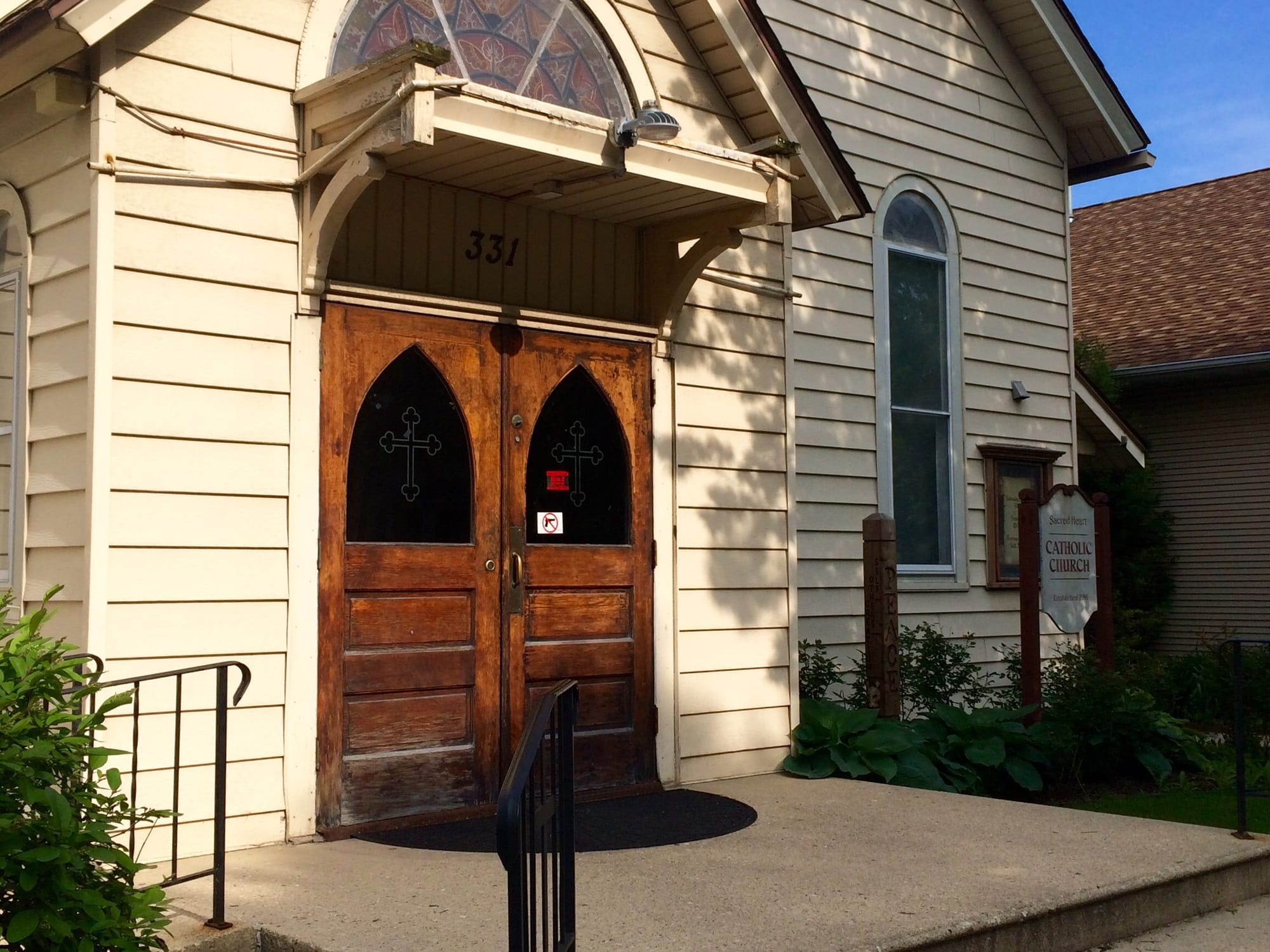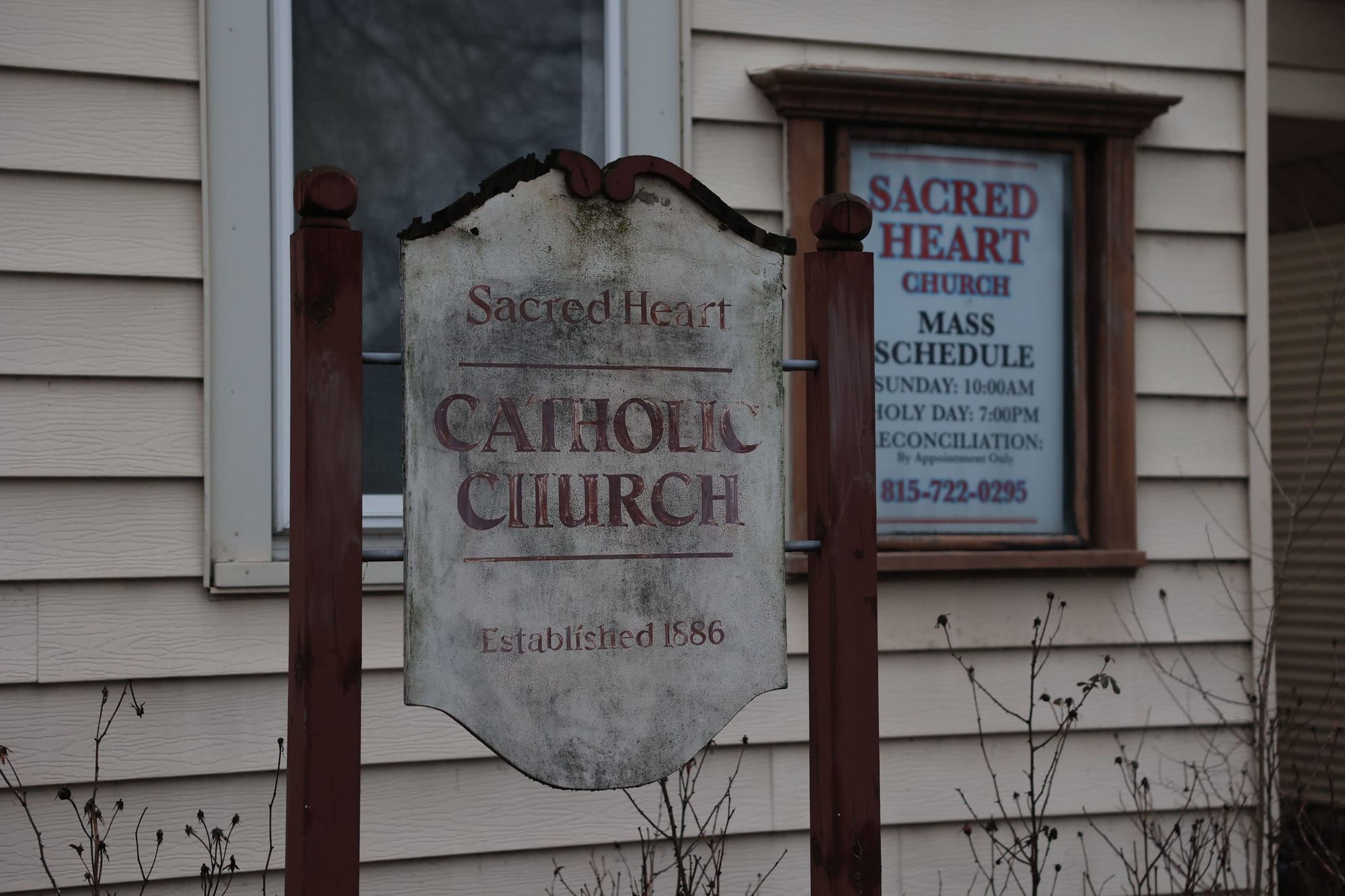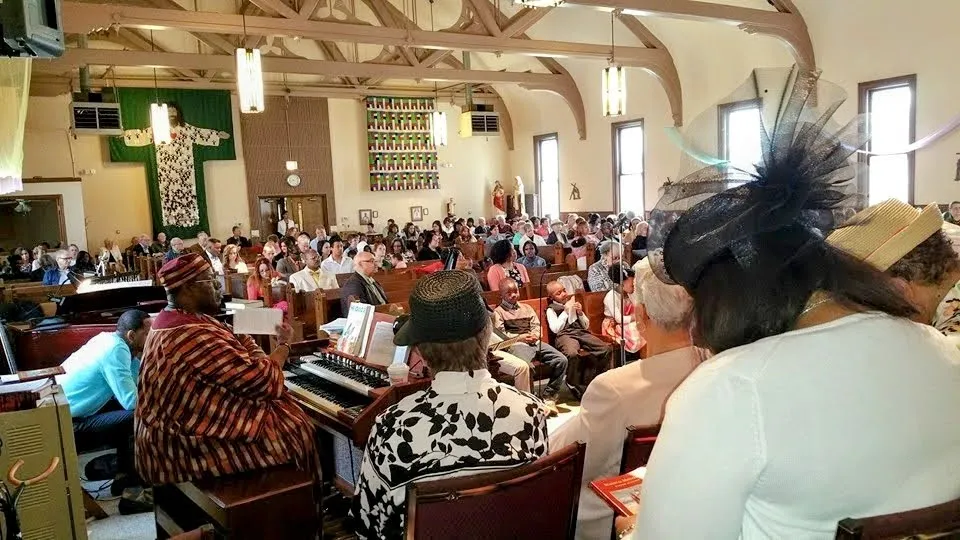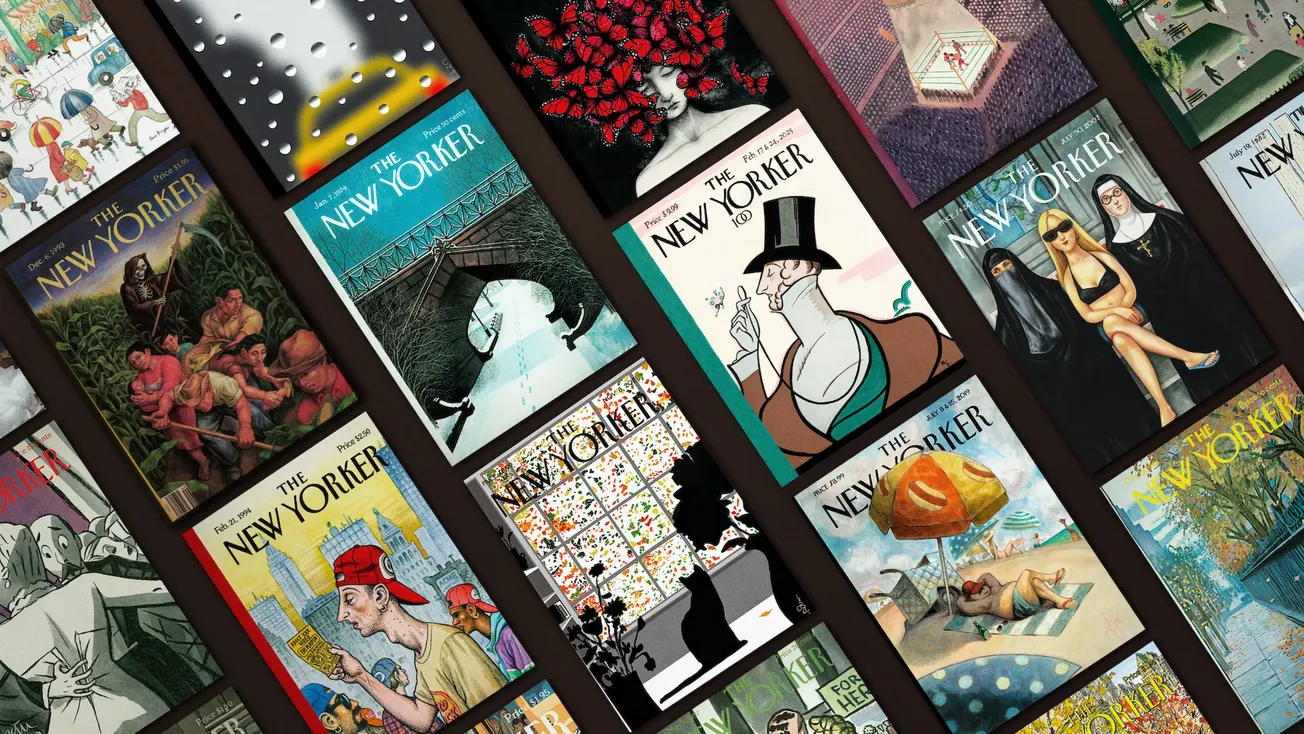It was in the spring of 2007. I was wrapping up a day of work at the Pastoral Center of the Archdiocese of Chicago, where I was the Coordinator of Marriage Ministry. I got a call from my friend and colleague, Jim Healy, the Director of family life ministry in the neighboring Joliet Diocese. Jim asked if I would be available and willing to come there to Sacred Heart Church to consult at a meeting about a new marriage ministry at the parish.
I had heard of Sacred Heart, a Black Catholic parish on the East Side of Joliet, though I had never been there. Intrigued by its reputation as the Black parish of the diocese, and with a sense of indebtedness to Jim (for exactly what, I don’t recall), I said, “Yes.”
The roughly 45-minute drive to Sacred Heart from the Cardinal Meyer Pastoral Center took an hour. Arriving late, I could see that the small church was situated definitely in “the hood.” My preparation for the meeting was a mental romp through the long history (25+ years) that my wife, Terri, and I had in Black Catholic marriage ministry. I had prepared myself to meet a group of Black couples. I was ready to share sociological data on Black marriage and family life and discuss my experiences and focus on Black families, Black couples, Black culture, and Black spirituality.
But, to my surprise (and bewilderment), the several couples gathered were mostly White—which had me much less focused on what I wanted to share with them and more intent on listening and observing.
From the onset, I realized that my usual spiel for addressing Black couples about marriage ministry wouldn’t do. In the introductions, the couples talked about parish life and their intentionality with Black spirituality and gospel music. Someone mentioned the annual revival the parish hosted. Further bewildered, I spoke more generally on how to set up a parish-based marriage ministry.
I left that meeting feeling confident that I had made a worthy contribution to the gathering. I also left with great curiosity about this small, racially mixed, gospel-centered community of faith—Sacred Heart. Before I left, I made sure to have their Mass schedule. I felt a need to worship with the folks I had just met.

At that time, Terri and I were adjusting to being empty-nesters. The kids were gone; the dog had died. It was just us. The change of family life stage also changed our relationship with our parish. No longer raising kids in the Church and being their “first catechists” feeding their faith life, we needed to be fed spiritually. Our suburban, middle-class parish was offering the usual soft sell of the Gospel while leaning further to the political right. Issues of social justice, antiracism, and the Church’s social mission were becoming more muted.
No longer raising kids, we felt a call to a deeper experience of worship that connected us to a radical faith life. Inspired by Catholic social teaching, one of the best-kept secrets in the suburban Catholic bubble, we longed for a worship experience where hearing the Gospel disturbs us and encourages us to do what Jesus would do, go where Jesus would go, and be among the people with whom Jesus would be.
We had been “window shopping” other parishes in nearby areas, as well as several Black parishes in Chicago. So, when I left the meeting of couples, I put Sacred Heart on our list of parishes we would visit soon. From our home in the South Chicago suburbs, driving to Joliet was no farther than driving to the South Side of Chicago. We would be worshiping in the Joliet Diocese while being employed in the Chicago Archdiocese. Awkward, but still my prerogative.
It was only a couple of weeks after that first meeting that Terri and I came to Sacred Heart for Sunday Mass. Entering the doors of the little church in the middle of a residential block, we were met by enthusiastic greeters who welcomed us. We were greeted also by some of the couples from the meeting I had attended there. Pat and Lois, Pam and Harry, Sophie and Deacon Ralph were all surprised and delighted to see us. The warmth of the hospitality that received us felt loving and sincere. The choir, led by a soulful director, rocked with the gospel hymns of the Black Church. Also striking about the choir was its racial makeup, mostly White.
At the end of Mass, birthdays and anniversaries were acknowledged and blessed. Visitors were invited to introduce themselves and say where they were from. After which, the choir and the entire congregation sang a song of welcome to the guests.
We welcome you to Sacred Heart. Welcome! Welcome! We welcome you to Sacred Heart.
It was like being welcomed into a large family. In all our years of being highly engaged Black Catholics, leading a national apostolate to Black Catholic marriage, and serving the Church in various regions of the country, we had never experienced such dynamics. Their hospitality was profuse, the Spirit was palpable, and we felt love in that moment. The celebrant was Bishop Joseph Imesch, standing in for the pastor, who was away on a fishing trip.
Completely swept off our feet, we returned the following weekend. That’s when we first experienced Fr Ray Lescher, a John the Baptist-like firebrand for justice, a warrior for the poor and marginalized, and a preacher of the Good News. A self-described “Vatican II” priest, Lescher was ordained in the 1960s, fell in love with a woman, left the priesthood, married, raised a family, became widowed, and returned to the priesthood.
His humility, his frank and feisty personality, his love for people in poverty, his thirst for justice, his fidelity to Black spirituality, along with his disdain for the elitism in the Church hierarchy (the “muckety-mucks”) spoke directly to our longing for a lay empowered, “social justice” church.

It seemed as though the Holy Spirit had led us there to Sacred Heart. Her direction was loud, clear, and timely. It had been a few years since I was highly engaged with parish ministry. The volume of work I had in the Chicago Archdiocese and the national marriage ministry that Terri and I co-led had been at a level that precluded my involvement in ministries at our previous parish.
Recently in the empty nest with more available time, I was eager to serve at Sacred Heart as a lector, extraordinary minister of Communion, and a member of the choir. Terri served on the parish council, I on the revival planning team. Our daughter Andréa started coming to church with us and served on the art and environment committee. She invited her new boyfriend Andre to come. He joined the choir as the bass player. In 2009, they got married at Sacred Heart and eventually had their three children baptized there.
In 2010, Terri and I had the privilege to be a part of a cohort of Sacred Heart parishioners to travel to Uganda for a “Pilgrimage of Pain and Hope” led by Fr Emmanuel Katongole. There we visited several communities, including those who benefited from the fresh water wells that Sacred Heart had funded over the years. It was a life-altering experience for us.
When I became the director of the Office for Black Catholics in the Archdiocese of Chicago, I took the liberty to include Sacred Heart among the parishes I served. It was featured on occasion in the radio show I hosted, as well as the monthly online magazine, “The Drum: The Beat of Black Catholic Chicago.” I was proud and eager to share the good news of Sacred Heart.
Most profound for me was the support and encouragement I received from the parish when I fell gravely ill in 2015. After months of hospitalizations, chemotherapy, and convalescing at home, I remember returning there for Sunday Mass. As we entered the church, the entire congregation rose to their feet with applause and cheers. I can’t remember ever feeling so loved.
However, the bone marrow transplant I underwent left me with a compromised autoimmune system, which required me to not be in public spaces. This and the COVID-19 pandemic made it necessary for me to be a shut-in. In retirement and convalescing in a new stage of life, the drive to Joliet became much more difficult. Yet, Sacred Heart has remained a spiritual home for my family and a bastion of hope for true Catholicity.
On Sunday, June 30, 2024, we made our final visit to Sacred Heart. Terri and I were joined by our daughter, son-in-law, and all our grandblessings for the final Mass. The Joliet Diocese, like Chicago and many dioceses around the country, determined it necessary to go through a process of parish closings and mergers. That specter had shadowed over Sacred Heart for several years. Fr Bill Dewan, the pastor since 2016, had fought the good fight for keeping the parish open. But our spiritual home, Sacred Heart, didn’t make the final cut.
The sentiments of the parishioners regarding this end of an era in the Joliet Diocese were threefold: sadness, gratitude, and hope. Fr Bill’s final homily was heartfelt, encouraging, and hope-filled. The love that swept us off our feet 17 years ago continues on in new spaces. My own sense of loss is assuaged by an overwhelming sense of gratitude for the grace that brought my family and me there, the loving hospitality that held us there, and the hope that this unique community of faith has left in us.
Though the building is now closed, the name retired, and the community dispersed, the spirit of Sacred Heart Catholic Church on Ottawa Street on the East Side of Joliet remains alive in all who have called it home. Thanks be to God!
Andrew Lyke is a retired ministry consultant, social media influencer, storyteller, poet, blogger, freelance writer, Catholic antiracism activist, husband, father, grandfather, son, brother, and follower of Jesus. He and his wife, Terri, are authors of “Marriage On A Lampstand: Exploring a New Paradigm for Modern Christian Marriage.”









